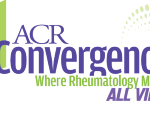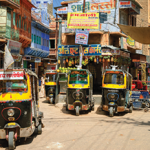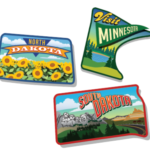Long Day’s Journey
I wanted to see the world and felt that I would get the best possible training if I came abroad,” says Niveditha Mohan, MD, of her decision to leave Chennai, India—where she earned her medical degree at the University of Madras—and travel halfway around the world to complete a residency at the Brooklyn Hospital Center in New York City. She was in search of a more rounded perspective of the world and exposure to more aspects of training, such as research and clinical trials. However, sometimes the best medical training comes not in high-tech urban hospitals but in underserved communities where care has to accommodate small-town life and a shortage of services. For Dr. Mohan, working in an underserved South Dakota community offered lessons she didn’t learn in the classroom.
“It’s nice being in an academic setting because you have the luxury of bouncing ideas off other colleagues and can refer complicated patients for a second opinion,” says Dr. Mohan. “But my experience in Sioux Falls gave me the confidence to deliver care in a real-world setting.”
East Coast Adventure
“Moving from India to New York was like an adventure that you have always dreamed about coming true. … [New York] was big, bold, brash, beautiful and exciting, especially since I had never been to the U.S. before and the first place I landed in was NYC. … Yet in some ways New York was also easy to get used to because it was so diverse, and anyone could live in New York and not feel out of place.”
She lived on the East Coast for the next 10 years, accepting a fellowship and then a faculty position at Georgetown University Medical Center in Washington, D.C., after finishing at Brooklyn Hospital Center.
In 2003 she relocated to Sioux Falls, S.D., because her husband, a hematologist-oncologist who is also from India, was able to get his visa requirements waived by working in a underserved area. Dr. Mohan was one of four practicing rheumatologists in a city of about 120,000 people. In addition to treating local residents, she cared for patients from surrounding towns and rural areas, including several from underserved Native American reservations.
Midwest Move
“Everything seemed different,” she says, “starting from the topography of the place, the weather, the people, pace of life, traffic, attitudes. … It made me realize how insular large parts of this country are, and it gave me a better understanding of some of the dichotomies that have puzzled me about American politics and policies.”
While in South Dakota, Dr. Mohan practiced at Avera-McKennan Hospital, where some patients had to drive several hours to see her. For example, Native American reservations such as Rosebud and Pine Ridge were 250 miles to 350 miles away, respectively. Patients there were referred to the city by their community hospital’s primary care physicians because subspecialists on the reservations were rare. The Indian Health System would usually arrange transportation, says Dr. Mohan.
These patients usually had much worse diseases than other patients Dr. Mohan and her colleagues saw. If they had rheumatoid arthritis (RA), it was usually advanced, she says. If they had lupus, they were much sicker than other patients. “This was partly due to a delayed referral or because they sought medical care too late,” she says. “These patients also had a much more stoic attitude toward their physical ailments.”
Coordinating ongoing care for Native Americans on reservations and other people living in rural communities was challenging, says Dr. Mohan. For example, patients taking methotrexate for RA should ideally undergo blood work every two months. “But we couldn’t follow algorithms by the book for practical reasons,” she says.
Rural Challenges
Farmers needing to drive to Sioux Falls had to overcome obstacles such as gas prices, icy roads during the winter, or missing a day of work during harvest season. “We had to find other ways to monitor their disease and medications,” says Dr. Mohan. “We would tell them, ‘If A, B, or C happens, call me right away so we can arrange care.’”
Unfortunately, some patients on the reservations did not have enough money to make a phone call or did not own a phone, notes Dr. Mohan. Additionally, medical care and compliance were compromised by issues such as substance abuse, alcoholism, and unemployment, she explains. Other problems were lack of education and lower socioeconomic status—the Pine Ridge Reservation is located in one of the poorest counties in the United States, according to the Bureau of Economic Analysis.
Dr. Mohan is currently assistant professor of medicine at the University of Pittsburgh Medical Center in a city she describes as “a midway point between the extremes of living in a big city on the east coast and a typical midwestern town in the heartland.” She still thinks about the challenges of delivering rheumatologic care in rural settings, though.
One way to overcome some of the many hurdles associated with treating rheumatology patients in rural South Dakota is to establish an outreach program, says Dr. Mohan. “The problem is, there is a shortage of rheumatologists across the country and we tend to be concentrated in bigger towns and cities,” she says. But even if rheumatologists could do a couple of outreach clinics in these communities just once or twice a month, it would help to improve care.”
Heather Lindsey is a medical journalist based in New York City.



